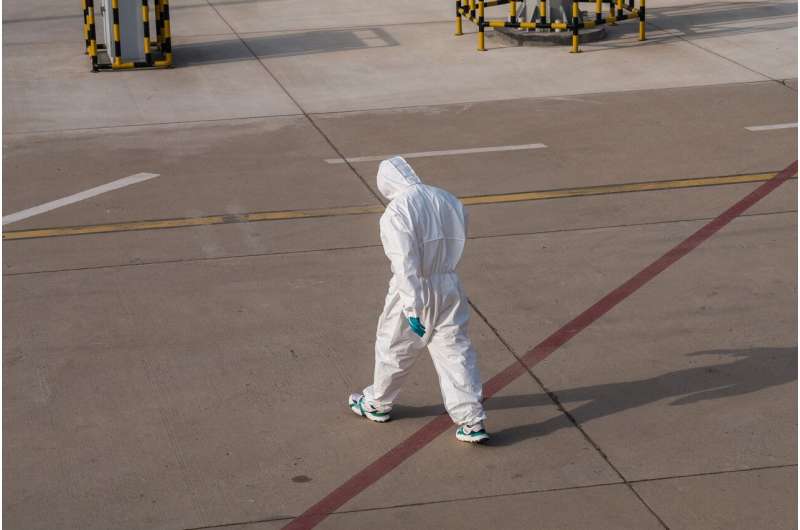The COVID-19 pandemic in 10 figures


Here are 10 key numbers in the COVID-19 pandemic.
6.8 million dead
Since early 2020, more than 6.8 million deaths from COVID-19 have been officially recorded, out of 752 million cases worldwide, according to the World Health Organization (WHO) on January 27.
The United Nations’ health agency, however, considers the figures to be greatly underestimated, saying the real toll could be two to three times higher.
13 billion jabs
Some 13.25 billion anti-COVID vaccine shots have been administered around the world, according to Our World in Data (OWID) on January 30.
While 69.4 percent of the world’s population has received at least one dose, only 26.4 percent has in lower-income countries.
Six out of 10 in lockdown
At the height of the first wave of the pandemic in the spring of 2020, more than 4.5 billion people in 110 countries or territories were forced or called on to stay at home to fight the spread of the virus, according to an AFP count on April 17, 2020.
That represents nearly 60 percent of the world’s population.
Eight schoolchildren out of 10 at home
On April 20, 2020, schools and universities were closed in 151 countries, affecting 1.29 billion youths, or 81.8 percent of schoolchildren and students around the world, according to UNESCO.
Hundreds of billions of masks
On public transport, in schools, in shops and even in the open air, masks have become the most symbolic accessory of the pandemic.
From March to end December 2020, China alone exported 224 billion masks around the world, according to Chinese customs figures.
3.1 percent global GDP drop
By bringing activity to a halt in numerous economic sectors, the pandemic led to a 3.1 percent fall in global gross domestic product in 2020, according to the World Bank. By comparison, GDP fell by 1.3 percent in 2009 during the sub-prime crisis.
GDP then bounced back by 5.9 percent at the world level in 2021.
135 million jobs lost
The pandemic had a heavy impact on employment, with 135 million jobs lost in 2020, according to the International Labour Organisation (ILO). Although the situation has started to pick up, 56 million more people are out of work in 2022 than before the pandemic, and an estimated 37 million are expected to remain so in 2023.
60 percent fewer air passengers
Air travel was hard hit by the pandemic with its lockdowns and border closures. In 2020, the number of passengers more than halved, down 60 percent compared to 2019, according to the International Air Transport Association (IATA). The aviation industry has yet to fully recover.
In 2022, the number of passengers is expected to be 27 to 29 percent lower than that of 2019.
5.2 percent less carbon emissions
Carbon emissions dropped by a record 5.2 percent in 2020, according to the Global Carbon Project (GCP) in November 2022.
That was not sufficient to stop global warming and its impacts in their tracks. The decrease was over a short period. Emissions are expected to hit record levels in 2022.
A quarter more depressions
Cases of anxiety and depression around the world increased by 25 percent in the first year of the pandemic, according to the WHO in March 2022.
Blaming the unprecedented stress caused by social isolation during the pandemic, it said young people and women were the most badly affected.
© 2023 AFP
Source: Read Full Article




